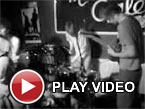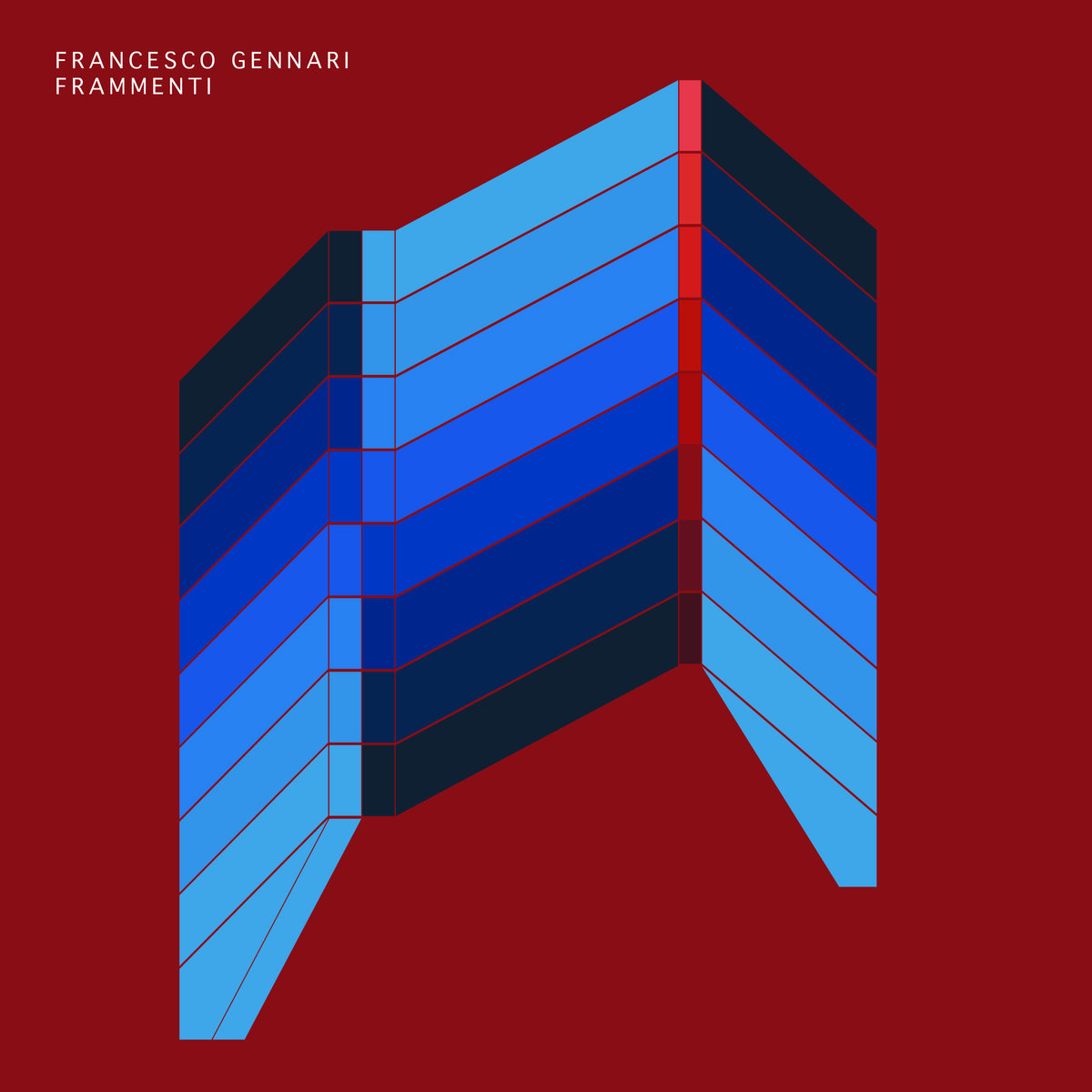 It is immediately clear from the opening piece "Preludio" that this is music composed with an unusually clear sense of structure and direction. As a classically trained pianist, Francesco Gennari has a solid grounding in music theory and he applies this knowledge to modular synths, with an authentic desire for experimentation and some serious chops; he can play. What elevates this debut recording even further is his ability to develop complex pieces from simple themes, while injecting energy and a sense of aggression and dynamics into his music.
It is immediately clear from the opening piece "Preludio" that this is music composed with an unusually clear sense of structure and direction. As a classically trained pianist, Francesco Gennari has a solid grounding in music theory and he applies this knowledge to modular synths, with an authentic desire for experimentation and some serious chops; he can play. What elevates this debut recording even further is his ability to develop complex pieces from simple themes, while injecting energy and a sense of aggression and dynamics into his music.
Having grown up during the prog rock heyday of the early 1970s, knee deep as we were in the truly awful and the absolutely bloody magnificent, I hesitated to refer to Gennari as "classically trained." Back then, and particularly when applied to guitarists or keyboard players, this phrase became almost a code word for impressive speed and an elite technique almost inevitably leading to impressive dullness and top notch overcomplexity. No such pitfalls with Frammenti, though, and there is not a dull moment on this entire album. It smacks of a brilliant sci-fi soundtrack. In fact if I were Ridley Scott I'd redo Blade Runner, keeping the best bits of Vangelis, erasing all traces of the white dove, and liberally applying some Frammenti. (Then I'd also demand that Dennis Villeneuve recall and destroy all copies of Blade Runner 2049 but that's another story).


 The Heartwood Institute creates memorable hauntological radiophonic doom-synth library folk music wherein traditional instruments from autoharp to zither are warped beyond identification, and blended into a barrage of synths and samplers, with film dialogue and nature sounds sprinkled in. Witchcraft is the subject matter of Pendle, and the album has a suitably spellbinding atmosphere, albeit one with the sense to emphasize grime and poverty. That's not to say there are not layers of sound which suggest cloudy pseudo-romantic myth, misty obscurity, and even smoke billowing up from a hexastein into some corridor of eternal purgatorial uncertainty where no one can hear your appeals for help, your moans or wails.
The Heartwood Institute creates memorable hauntological radiophonic doom-synth library folk music wherein traditional instruments from autoharp to zither are warped beyond identification, and blended into a barrage of synths and samplers, with film dialogue and nature sounds sprinkled in. Witchcraft is the subject matter of Pendle, and the album has a suitably spellbinding atmosphere, albeit one with the sense to emphasize grime and poverty. That's not to say there are not layers of sound which suggest cloudy pseudo-romantic myth, misty obscurity, and even smoke billowing up from a hexastein into some corridor of eternal purgatorial uncertainty where no one can hear your appeals for help, your moans or wails.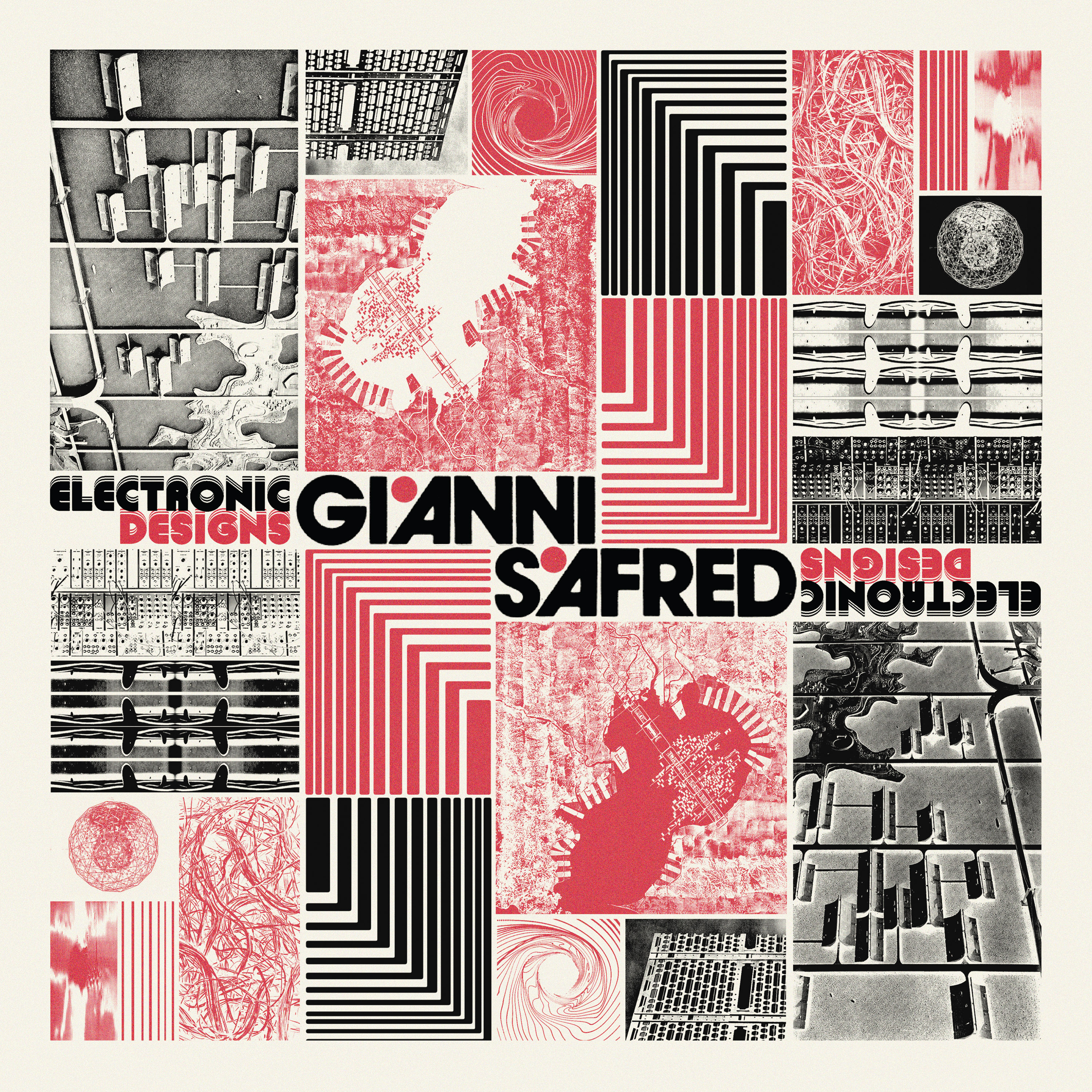 Electronic Designs was originally released in 1977 and it retains a weird and wonderful retro-futuristic atmosphere. By turns bizarre and swinging, wild and smooth, these recordings have a depth and an edge not always achieved in so-called library music. Younger glitch merchants can only hope to get close to the swing that Italian master Gianni Safred effortlessly knocks off on "Elastic Points." Then again, he did play with Django Reinhardt. This is a killer release with calculated, almost architectural, quality oozing out of every track. The cosmic melancholy of "Spheres'' is not unlike some of Basil Kirchin's more poignant compositions, such as "I Start Counting" while the frankly stunning "Planetarium" has Safred gradually unleashing an array of textural flourishes, as if imitating meteors or shooting stars amid a galaxy of stars and planets.
Electronic Designs was originally released in 1977 and it retains a weird and wonderful retro-futuristic atmosphere. By turns bizarre and swinging, wild and smooth, these recordings have a depth and an edge not always achieved in so-called library music. Younger glitch merchants can only hope to get close to the swing that Italian master Gianni Safred effortlessly knocks off on "Elastic Points." Then again, he did play with Django Reinhardt. This is a killer release with calculated, almost architectural, quality oozing out of every track. The cosmic melancholy of "Spheres'' is not unlike some of Basil Kirchin's more poignant compositions, such as "I Start Counting" while the frankly stunning "Planetarium" has Safred gradually unleashing an array of textural flourishes, as if imitating meteors or shooting stars amid a galaxy of stars and planets. Matthew Cooper's newest Eluvium album is apparently inspired by two works of poetic literature by T.S.Eliot and Richard Brautigan. That's easier said than done, of course, and equally unclear is how Cooper has changed his compositional methodology because of a debilitating medical problem with his left shoulder and arm. It is hard to decipher exactly what is meant by, to paraphrase, blending electronic automations with traditional songwriting and using algorithms to extract from several years of notebook scribble. Perhaps this means he has worked in cyborgian harmony with machines, which would fit with the Brautigan reference point of All Watched Over By Machines Of Loving Grace.
Matthew Cooper's newest Eluvium album is apparently inspired by two works of poetic literature by T.S.Eliot and Richard Brautigan. That's easier said than done, of course, and equally unclear is how Cooper has changed his compositional methodology because of a debilitating medical problem with his left shoulder and arm. It is hard to decipher exactly what is meant by, to paraphrase, blending electronic automations with traditional songwriting and using algorithms to extract from several years of notebook scribble. Perhaps this means he has worked in cyborgian harmony with machines, which would fit with the Brautigan reference point of All Watched Over By Machines Of Loving Grace. Emahoy Tsege Mariam Gebru passed on early this year, but not before this album was released to celebrate her 99th birthday. It collects pieces originally issued in 1972 as Song of Jerusalem, including the stunning title track and "Quand La Mer Furieuse" in which Gebru sings; a moment which probably should not draw parallels with "Garbo Talks!" (when the speaking voice of that star of silent films first shocked audiences to sleep) but is as startlingly beautiful as you might expect if you have heard her play her compositions for piano at all. These she does in a manner impossible to hear without feeling as if the sun has come out from behind a cloud and is gently warming the side of your face. Reach for adjectives and terms such as liturgical, classical, homemade, and heavenly, but the key word is definitely "transcendent."
Emahoy Tsege Mariam Gebru passed on early this year, but not before this album was released to celebrate her 99th birthday. It collects pieces originally issued in 1972 as Song of Jerusalem, including the stunning title track and "Quand La Mer Furieuse" in which Gebru sings; a moment which probably should not draw parallels with "Garbo Talks!" (when the speaking voice of that star of silent films first shocked audiences to sleep) but is as startlingly beautiful as you might expect if you have heard her play her compositions for piano at all. These she does in a manner impossible to hear without feeling as if the sun has come out from behind a cloud and is gently warming the side of your face. Reach for adjectives and terms such as liturgical, classical, homemade, and heavenly, but the key word is definitely "transcendent."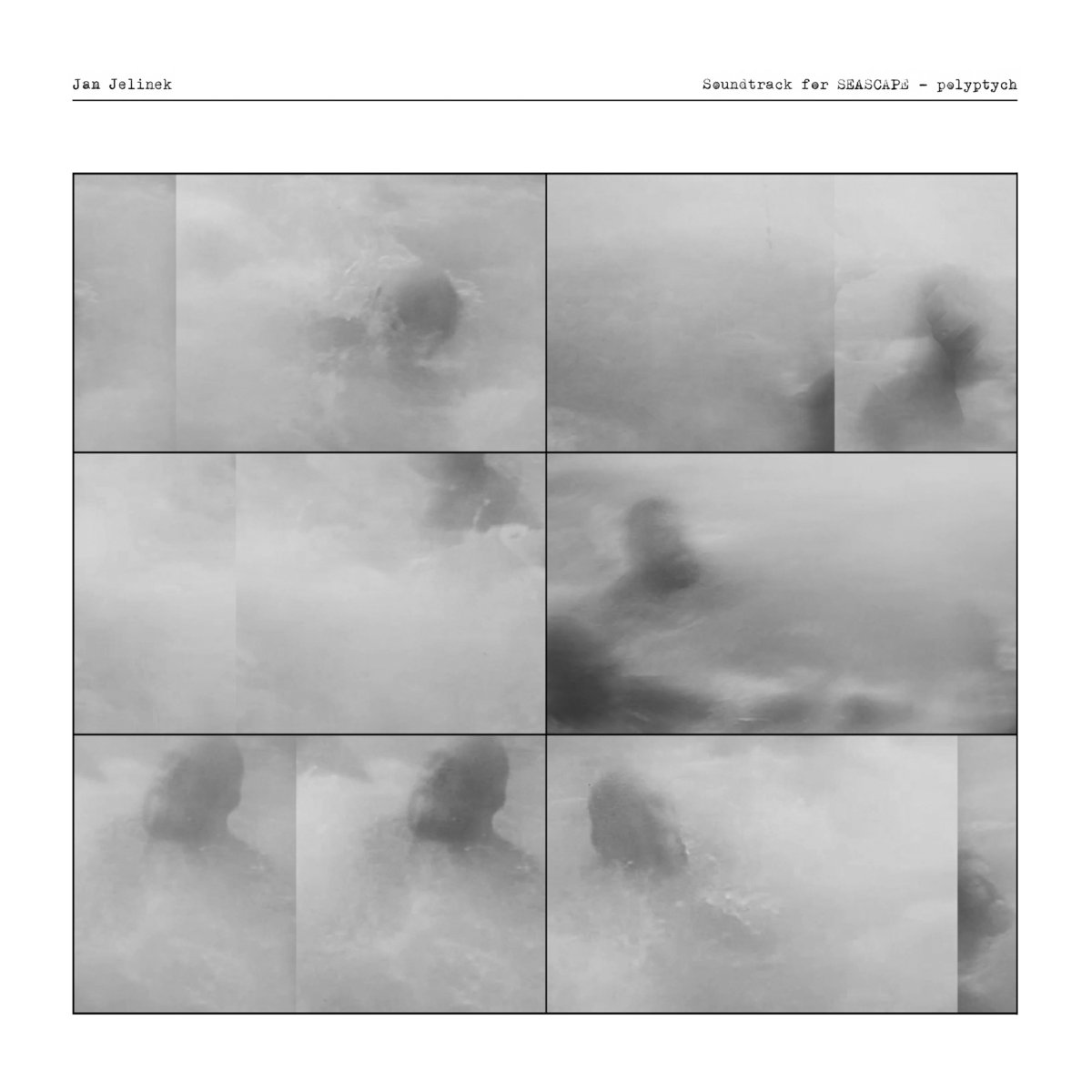 Back in 2017 Jan Jelinek created a 43 minute radio play called Zwischen featuring Alice Schwarzer, John Cage, Hubert Fichte, Marshall McLuhan, Susan Sontag, Rainer Werner Fassbinder, Joseph Beuys, Friedericke Mayröcker, Joschka Fischer, Jonathan Meese, Jean Baudrillard, Lady Gaga, Slavoj Zizek, Richard Buckminster Fuller, Marcel Duchamp, Karlheinz Stockhausen, Miranda July, Yoko Ono, Ernst Jandl, Arno Schmidt, Herbert Wehner and Max Ernst.
Back in 2017 Jan Jelinek created a 43 minute radio play called Zwischen featuring Alice Schwarzer, John Cage, Hubert Fichte, Marshall McLuhan, Susan Sontag, Rainer Werner Fassbinder, Joseph Beuys, Friedericke Mayröcker, Joschka Fischer, Jonathan Meese, Jean Baudrillard, Lady Gaga, Slavoj Zizek, Richard Buckminster Fuller, Marcel Duchamp, Karlheinz Stockhausen, Miranda July, Yoko Ono, Ernst Jandl, Arno Schmidt, Herbert Wehner and Max Ernst. Dorothy Moskovitz was the singer in The United States of America, a short-lived group which made one legendary self-titled album. That was in December 1967 and she later became a member of Country Joe McDonald's band, sang live jazz, composed for children, commercials, theater, and became an elementary school music teacher. Her return on Under an Endless Sky, recorded with Italian electronic composer Francesco Paolo Paladino and writer Luca Ferrari is astonishing, and never more so at the moment around two and a half minutes into the opening title track when we hear Dorothy Moskovitz sing for the first time in a very long time*. If her voice once sounded cooler and more urbane than Catherine Ribeiro's, more innocent and intelligent than Grace Slick's, in 2023 it has a crumbling beauty and defiant timbre usually associated with Robert Wyatt or Nico (who apparently once tried to join TUSoA). Comparisons are entertaining but also odious; Moskovitz is a strange, distinctive treasure, perhaps unique.
Dorothy Moskovitz was the singer in The United States of America, a short-lived group which made one legendary self-titled album. That was in December 1967 and she later became a member of Country Joe McDonald's band, sang live jazz, composed for children, commercials, theater, and became an elementary school music teacher. Her return on Under an Endless Sky, recorded with Italian electronic composer Francesco Paolo Paladino and writer Luca Ferrari is astonishing, and never more so at the moment around two and a half minutes into the opening title track when we hear Dorothy Moskovitz sing for the first time in a very long time*. If her voice once sounded cooler and more urbane than Catherine Ribeiro's, more innocent and intelligent than Grace Slick's, in 2023 it has a crumbling beauty and defiant timbre usually associated with Robert Wyatt or Nico (who apparently once tried to join TUSoA). Comparisons are entertaining but also odious; Moskovitz is a strange, distinctive treasure, perhaps unique. Back in 2019 Benoit Pioulard (Thomas Meluch) issued Sylva—an album full of abstract hyper-saturated lo-fi drone-pop sonic textures, which came with an 84 page collection of nature photographs in a linen book. Two pieces with vocals stood out: the brilliantly Bibioesque "Keep" and the less jangly but equally catchy "Meristem." These songs could not have been more appealing to me if Meluch had somehow used a machine to extract my personal dream essence as I slept. Naturally, I promptly forgot to write anything about Sylva, but Eidetic is a leap forward, with more vocals, so I'm glad I kept my powder dry.
Back in 2019 Benoit Pioulard (Thomas Meluch) issued Sylva—an album full of abstract hyper-saturated lo-fi drone-pop sonic textures, which came with an 84 page collection of nature photographs in a linen book. Two pieces with vocals stood out: the brilliantly Bibioesque "Keep" and the less jangly but equally catchy "Meristem." These songs could not have been more appealing to me if Meluch had somehow used a machine to extract my personal dream essence as I slept. Naturally, I promptly forgot to write anything about Sylva, but Eidetic is a leap forward, with more vocals, so I'm glad I kept my powder dry. Every so often a beautifully flawed pseudo-concept album gets released which it is almost a sin to try to describe. So it is with this absolutely mesmerizing record, a taste-smashing, fabulously old-fashioned, wobbly blitzkrieg of slippery, retro-futuristic, prog rock precision. As a rule I try to avoid describing music by talking about other music the reader may or may not have heard, but the gloves are coming off for this one. Imagine if modern psych groups weren't so one-paced, if Barclay James Harvest had a wah wah pedal and enjoyed fiddling with tape speeds, if Yes were fronted by Serge Gainsbourg or had a sense of humor, if The Opium Warlords and Bo Hansen joined The Mike Sammes Singers; and it all sounded perfectly natural. Juxtaposition and incongruity are at the heart of The Valley of The Dandies: a wonderfully unpredictable recording which manages to sound deliberately dated, and also touches on mythical themes ("explored" would be an exaggeration) but not in a po-faced or over-referential manner. The music is sometimes grandiose but CV Vision does not portray by resorting to a dull slow burn plodding pace. These tunes are amusing, bright, clever, and dynamic, the lyrics intriguingly clumsy but yet light and unobtrusive. There is an unknowable quality to this album, though; and a certain confidence in its completeness. It can not be reduced to a few neat genres, has a rich complexity but never sounds cluttered or gets bogged down. This is a real gem: clean, clear and valuable. It may become a cult classic or merely prove to be a refreshing oddity. Either way I played this thing through five times without a break!
Every so often a beautifully flawed pseudo-concept album gets released which it is almost a sin to try to describe. So it is with this absolutely mesmerizing record, a taste-smashing, fabulously old-fashioned, wobbly blitzkrieg of slippery, retro-futuristic, prog rock precision. As a rule I try to avoid describing music by talking about other music the reader may or may not have heard, but the gloves are coming off for this one. Imagine if modern psych groups weren't so one-paced, if Barclay James Harvest had a wah wah pedal and enjoyed fiddling with tape speeds, if Yes were fronted by Serge Gainsbourg or had a sense of humor, if The Opium Warlords and Bo Hansen joined The Mike Sammes Singers; and it all sounded perfectly natural. Juxtaposition and incongruity are at the heart of The Valley of The Dandies: a wonderfully unpredictable recording which manages to sound deliberately dated, and also touches on mythical themes ("explored" would be an exaggeration) but not in a po-faced or over-referential manner. The music is sometimes grandiose but CV Vision does not portray by resorting to a dull slow burn plodding pace. These tunes are amusing, bright, clever, and dynamic, the lyrics intriguingly clumsy but yet light and unobtrusive. There is an unknowable quality to this album, though; and a certain confidence in its completeness. It can not be reduced to a few neat genres, has a rich complexity but never sounds cluttered or gets bogged down. This is a real gem: clean, clear and valuable. It may become a cult classic or merely prove to be a refreshing oddity. Either way I played this thing through five times without a break! Just about anything which bucks stereotypes, and the more effortlessly the better, is usually fine and dandy with me. The notion of a sustained outbreak of surrealism down in Alabama is therefore beyond delicious. I say this because there's a definite sense in which Turner Williams Jr. is following in the rambling loose limbed footsteps of such musicians as Ron Pate, Fred Lane, LaDonna Smith, and particularly Davey Williams, who studied with Johnny Shines and was part of the whole Raudelunas Pataphysical Revue scene - playing alto and guitar on such pieces as "The Lonely Astronaut" and "Concerto For Active Frogs''. Let me say here that the origin of pataphysics is perhaps best left to another time, since Alfred Jarry's absurdity and all that merde (absinthe-fueled and otherwise) simply cannot be skimmed over.
Just about anything which bucks stereotypes, and the more effortlessly the better, is usually fine and dandy with me. The notion of a sustained outbreak of surrealism down in Alabama is therefore beyond delicious. I say this because there's a definite sense in which Turner Williams Jr. is following in the rambling loose limbed footsteps of such musicians as Ron Pate, Fred Lane, LaDonna Smith, and particularly Davey Williams, who studied with Johnny Shines and was part of the whole Raudelunas Pataphysical Revue scene - playing alto and guitar on such pieces as "The Lonely Astronaut" and "Concerto For Active Frogs''. Let me say here that the origin of pataphysics is perhaps best left to another time, since Alfred Jarry's absurdity and all that merde (absinthe-fueled and otherwise) simply cannot be skimmed over. This is the fifth album of traditional folk tunes which Alasdair Roberts has issued. He has also released several albums of his own compositions and it is a mark of his skill that it is pretty much impossible to tell the difference, and to know whether songs are his own imaginings or not. All share an erudite sensibility, often mixing his plaintive ghostly wailing voice (sometimes mournful, often joyous) with fine, spidery, guitar accompaniment. This new record is a deep collection, full of sweet spots, rich in detail, crystal clear in execution, and teeming with life. As usual, he reveals the multilayered meanings and nuances in even the most apparently straightforward songs, as with "The Bonny Moorhen" of Celtic folklore, and "Drimindown," a simple tale of a lost cow but also a devastating loss of a family's livelihood.
This is the fifth album of traditional folk tunes which Alasdair Roberts has issued. He has also released several albums of his own compositions and it is a mark of his skill that it is pretty much impossible to tell the difference, and to know whether songs are his own imaginings or not. All share an erudite sensibility, often mixing his plaintive ghostly wailing voice (sometimes mournful, often joyous) with fine, spidery, guitar accompaniment. This new record is a deep collection, full of sweet spots, rich in detail, crystal clear in execution, and teeming with life. As usual, he reveals the multilayered meanings and nuances in even the most apparently straightforward songs, as with "The Bonny Moorhen" of Celtic folklore, and "Drimindown," a simple tale of a lost cow but also a devastating loss of a family's livelihood. I am obsessed with circles, but you don't need to share that obsession to notice and appreciate the gesture of respect here from Tujiko Noriko to Peter Rehberg with the insistence that Crepuscule I & II be issued in various formats, including cassette. Many years ago she dropped a cassette tape into the hands of the MEGO and Editions MEGO label founder. The tape contained her first album and, despite it being a big departure from the typically more brash and raw fare he was normally releasing, Rehberg liked what he heard and gave it a proper push. Universal acclaim did not follow.
I am obsessed with circles, but you don't need to share that obsession to notice and appreciate the gesture of respect here from Tujiko Noriko to Peter Rehberg with the insistence that Crepuscule I & II be issued in various formats, including cassette. Many years ago she dropped a cassette tape into the hands of the MEGO and Editions MEGO label founder. The tape contained her first album and, despite it being a big departure from the typically more brash and raw fare he was normally releasing, Rehberg liked what he heard and gave it a proper push. Universal acclaim did not follow.  Vandever's first solo album was recorded in three days and features her improvising on (mainly) trombone, effects, and voice. The improvised approach never shoves this music even an inch away from clarity, deftness, and emotional depth. Every piece feels fresh, abstract and dreamlike—as if she's channeling spirit voices from elsewhere—but all are restrained by the beguiling warmth, subtle tension, and comforting understatement of her sonorous playing. It's marvelous to hear the trombone burst, or maybe a more accurate descriptor would be slide, free of all genre association.
Vandever's first solo album was recorded in three days and features her improvising on (mainly) trombone, effects, and voice. The improvised approach never shoves this music even an inch away from clarity, deftness, and emotional depth. Every piece feels fresh, abstract and dreamlike—as if she's channeling spirit voices from elsewhere—but all are restrained by the beguiling warmth, subtle tension, and comforting understatement of her sonorous playing. It's marvelous to hear the trombone burst, or maybe a more accurate descriptor would be slide, free of all genre association. Letters From A Forest uses snippets of conversation, sung and spoken lyrics, simple guitar and piano lines, and (as Christian puts it) fake strings, to create what we can call collage atmospherics. The sum of these parts is a tender sounding album, crammed full of romanticized lyrics with a tough, honest, edge and a wondrous stream of consciousness style. When hearing tracks like the "The Ballad of Martin and Caroline,"—a tale of fates deeply entwined in a doomed love spiral—I felt like I was half napping or jet lagged in a spare room, overhearing friends babbling to one another about deceased acquaintances,musical heroes, old records,chance meetings, and the places where it all happened. As such, Letters is an ode to an array of magnificent and magnificently flawed people (some well known, others characters from local legend). It is a sketchbook of notes, more poetic than pathetic, with a palpably emotional tug, celebrating the contradictory nature of life.
Letters From A Forest uses snippets of conversation, sung and spoken lyrics, simple guitar and piano lines, and (as Christian puts it) fake strings, to create what we can call collage atmospherics. The sum of these parts is a tender sounding album, crammed full of romanticized lyrics with a tough, honest, edge and a wondrous stream of consciousness style. When hearing tracks like the "The Ballad of Martin and Caroline,"—a tale of fates deeply entwined in a doomed love spiral—I felt like I was half napping or jet lagged in a spare room, overhearing friends babbling to one another about deceased acquaintances,musical heroes, old records,chance meetings, and the places where it all happened. As such, Letters is an ode to an array of magnificent and magnificently flawed people (some well known, others characters from local legend). It is a sketchbook of notes, more poetic than pathetic, with a palpably emotional tug, celebrating the contradictory nature of life. In the village of Stanton Drew, and dating from around 4,500 years ago, is the third largest complex of standing stone circles in England. David Colohan visited the site one rainy morning in early 2020 and was inspired by the mix of winter sunshine and eerie ancient atmosphere to create a record of his impressions. Fair enough, since people rarely send postcards from their travels anymore. Actually, the postcard analogy only works if it allows for someone designing a postcard when they get home, since Colohan's use of field recordings is minimal and he doesn't really create music in situ. He's done this before with other locations but A Lunar Standstill is easily his most consistent recording.
In the village of Stanton Drew, and dating from around 4,500 years ago, is the third largest complex of standing stone circles in England. David Colohan visited the site one rainy morning in early 2020 and was inspired by the mix of winter sunshine and eerie ancient atmosphere to create a record of his impressions. Fair enough, since people rarely send postcards from their travels anymore. Actually, the postcard analogy only works if it allows for someone designing a postcard when they get home, since Colohan's use of field recordings is minimal and he doesn't really create music in situ. He's done this before with other locations but A Lunar Standstill is easily his most consistent recording. William Basinski recorded this music during his time living in San Francisco, when he presumably visited Clocktower Beach. Considering that Basinski once created On Time Out Of Time—music in tribute to quantum entanglement and the theories of Einstein and Rosen, and Einstein, Rosen, and Podolsky, using source recordings of the 1.3 billion year old sounds of two distant massive black holes—undoubtedly the subject matter of The Clocktower at the Beach is one of his more straightforward creations. Fair enough, it is one of his earliest drone pieces, yet his methodology is as intriguing as anything he's done, and (most important of all) the music is a memorable journey into the sadness of things. Back to "mono no aware," then.
William Basinski recorded this music during his time living in San Francisco, when he presumably visited Clocktower Beach. Considering that Basinski once created On Time Out Of Time—music in tribute to quantum entanglement and the theories of Einstein and Rosen, and Einstein, Rosen, and Podolsky, using source recordings of the 1.3 billion year old sounds of two distant massive black holes—undoubtedly the subject matter of The Clocktower at the Beach is one of his more straightforward creations. Fair enough, it is one of his earliest drone pieces, yet his methodology is as intriguing as anything he's done, and (most important of all) the music is a memorable journey into the sadness of things. Back to "mono no aware," then. I can hardly think of anything better for Aguirre to have reissued on vinyl than Morgan Fisher's collaboration with Lol Coxhill, originally released in1980 on Fisher's short-lived Pipe label. More than four decades later Slow Music is a rare phenomenon: a masterpiece which truly sounds like one. It remains an ambient landmark, an elemental work of art and imagination, and a painstaking labor of love.
I can hardly think of anything better for Aguirre to have reissued on vinyl than Morgan Fisher's collaboration with Lol Coxhill, originally released in1980 on Fisher's short-lived Pipe label. More than four decades later Slow Music is a rare phenomenon: a masterpiece which truly sounds like one. It remains an ambient landmark, an elemental work of art and imagination, and a painstaking labor of love.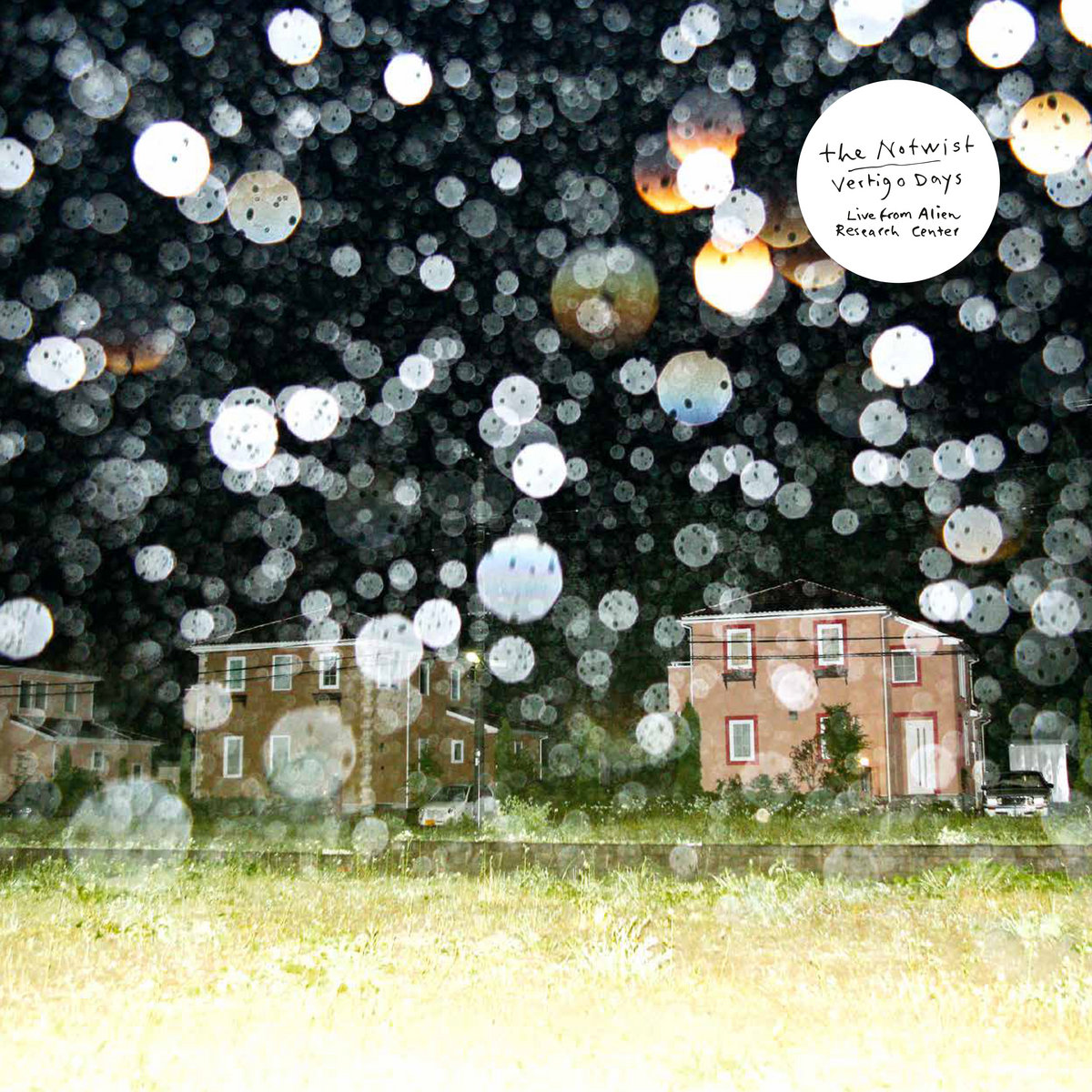 The Notwist tend to regard their live shows as launchpads where they can blast off from their studio albums on voyages of discovery. Live from Alien Research Center is a terrific document of that process, as the group re-explore the contents of Vertigo Days; their 2021 release which featured an array of guests from Angel Bat Dawid to Juana Molina. 2021-23 might seem a speedy recycling of the same material, but there is valuable quality of freedom and looseness in these live versions; stretched out and stitched together in the kosmische style.
The Notwist tend to regard their live shows as launchpads where they can blast off from their studio albums on voyages of discovery. Live from Alien Research Center is a terrific document of that process, as the group re-explore the contents of Vertigo Days; their 2021 release which featured an array of guests from Angel Bat Dawid to Juana Molina. 2021-23 might seem a speedy recycling of the same material, but there is valuable quality of freedom and looseness in these live versions; stretched out and stitched together in the kosmische style. This first volume of Valentina Goncharova's home studio recordings is devoted to her remarkable solo work over a four year period from 1987. The first six tracks in particular illustrate her genius for balancing written composition with spontaneity, and for manipulating sources (such as her voice and cello) into beautifully hypnotic maelstroms of melodic dissonance.
This first volume of Valentina Goncharova's home studio recordings is devoted to her remarkable solo work over a four year period from 1987. The first six tracks in particular illustrate her genius for balancing written composition with spontaneity, and for manipulating sources (such as her voice and cello) into beautifully hypnotic maelstroms of melodic dissonance. Archangels has an unhurried pace which I find deeply satisfying. John Bence shapes electronics, voice, piano, percussion and orchestration into dense and haunting forms, and although he creates some dynamic and challenging sounds, he never forgets that human ears need melodies and tunes. The spiritual concerns underpinning this creation also make it a good stepping off point to investigate and learn about a variety of concepts which have occupied people throughout human history.
Archangels has an unhurried pace which I find deeply satisfying. John Bence shapes electronics, voice, piano, percussion and orchestration into dense and haunting forms, and although he creates some dynamic and challenging sounds, he never forgets that human ears need melodies and tunes. The spiritual concerns underpinning this creation also make it a good stepping off point to investigate and learn about a variety of concepts which have occupied people throughout human history.